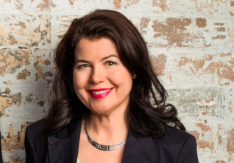Bondi Hipsters are alive and well in entertainment, media and advertising
With the annual PwC Media Outlook report showing the average media/adland worker is a white 27-year-old male from Sydney’s eastern suburbs Megan Brownlow asks whether the Bondi Hipster trope means we’re missing the mark when it comes to speaking to audiences.
Over the next five years Australia’s media and entertainment sector is forecast to grow in terms of advertising and consumer spend, but only moderately. There will be pockets of high growth in digital; however, this revenue is spread over many players. This begs the question, in a small and low growth market, what should our businesses be doing to grow?
At this time each year I work with a team of accountants and economists at PwC to crunch the numbers and give a broad view on the state of the industry and its future. This year, we included geospatial economic modelling to identify who epitomises an entertainment and media employee in Australia.
The results are fascinating – although not all that surprising. They show that the industry has a distinct lack of diversity, not just socio-economically but geographically.



Interesting read Megan. I’ve been reading about anonymised CV applications lately. Though not a direct action towards increased diversity, they might in part reduce some of the recruitment biases. Have you any data as to the efficacy of this approach?
Interesting article, however the statement “If you have diverse education levels among your senior managers your firm will perform poorly. If you operate on a production line, a diverse team can reduce cohesion in the group” really is unsubstantiated, (varying levels of education and backgrounds in fact enables company innovation) and appears to justify racism in the workplace. As anyone who has visited a factory where they produce “widgets” whether they be cartons or chicken nuggets knows, their production lines are frequently their only shining example of “diversity”, not reflected at management or executive level. I could name some brand-led companies here, but I won’t!
Really interesting reading. Thank you Megan.
It’s now up to the leaders of our businesses to genuinely take heed and move our offering to match the new century. Instead of scratching our heads as to why we aren’t as successful as we’d like to be.
I will certainly be committing to developing a more culturally diverse team.
Next year can we get the number of people who got a job from their dad’s mate.
Ethnic cleansing of the Australian media industry by the cultural marxists……….. What next can they cleanse perhaps.
“Ethnic cleansing of the Australian media industry by the cultural marxists”
Do you mean Namibian opera lovers taking over the means of production within yoghurt, but with guns and scrubbing brushes?
No doubt the survey doesn’t take into account that these employees didn’t come from these suburbs in the first place. The majority of them have moved there to fulfill these industry jobs that circulate around Sydney’s CBD and Melbourne. I work in an agency which is multi national, cultural and diverse. It just so happens that the eastern suburbs and inner west of Sydney offer fantastic living options which are easy to commute from.
Fantastic point Nick. I for one came from a working class / housing commission area on the central coast. I lives in the Inner west of Sydney for around 15 years after graduating from uni. I could be classified as a typical hipster in media but it isn’t a true reflection of the diversity that actually does exist now. Maybe the study should ask in future where you grew up and where you live now as that would be really interesting
Understanding the definition of “entertainment and media” is critical to any discussion on industry diversity – what categories does it include other than radio and TV stations ? If it includes media / advertising agencies, my observation is that the gender split is closer to 60% female. Also the comparison with the average Australian is irrelevant (one testicle ?). The comparison should be with Australians working in the professional services sector – or at the very least in full time white collar employment. This seems like a fairly lame profile raising exercise on behalf of PWC.